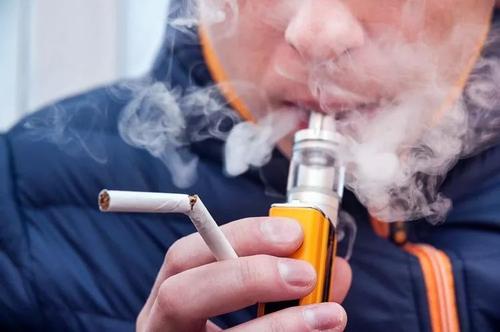May 17 - "How the tobacco Industry Uses Sponsored Content from Major media outlets to Change Public Opinion," posted on the website of truthInitiative, an anti-tobacco organization, as a guide to the tension between the tobacco and anti-tobacco industries over the issue.
The following is the full text:
The initiative study found that the tobacco companies have used including the Wall Street journal and the Washington post, the main news media to transform their corporate image, although many publishers to ban tobacco sponsorship content of policy, but still spend millions of dollars on advertising, so that it is consistent with the public health.
The study found that PMI and Altria, makers of Marlboro, spent a total of $11.72 million on corporate advertising between January 2020 and August 2021, which was concentrated in national newspapers such as the Boston Globe, Denver Post, Washington Post, Politico and The Wall Street Journal.

Wall Street Journal PMI advertorials
Spending may be a significant underestimate because it excludes all forms of advertising, including print advertorials - editorial-style ads strategically placed next to stories - promoting new non-combustible tobacco products to smokers behind the veil of harm reduction.
For example, PMI's vice president of strategy and science communications published an editorial in the New York Times about embracing science, and PMI's CEO published a similar AD in the Wall Street Journal promoting inclusion and progress, both touting the company's non-combustible products.
"Without stricter guardrail to prevent such advertising, the tobacco industry will continue to promote the narrative that best supports its bottom line -- regardless of the real consequences to public health." The authors write.
Limitations exist some form of advertising for tobacco products, in 1970 the federal ban on television and radio cigarette advertising, and later extended to smokeless tobacco advertising, and in 1998 the total settlement for created new restrictions, cigarette advertising of tobacco advertising people to young people, to cancel the cigarette outdoor ads, billboards and public transportation, And stopped sponsoring events.
While many publishers have their own policies banning paid advertising by the tobacco industry, newspapers and other media platforms are still allowed to advertise tobacco.
For example, in 1999 the New York Times and the Boston Globe banned cigarette advertising. However, such restrictions are increasingly ineffective in the face of newer forms of tobacco products and advertising.
Now, the tobacco industry is using the marketing channels still open to them to rebuild their reputation by promoting their products as a safer alternative to smoking.
Marlboro makers tout their investment in a smoke-free future
A recent Stanford University School of Medicine report specifically explored PMI's public relations campaign, claiming that PMI is a public health advocate seeking to create a smoke-free future.
According to the report, the campaign claims that PMI cares about public health and the health of smokers, that PMI's science is trustworthy and accurate, while its critics' science is misinformation, and that it is creating products like IQOS, which was first sold in the US.
The United States heated tobacco to produce nicotine aerosols in 2019 to provide smokeless nicotine. The report discusses the campaign's aggressive promotion and use of advertorials, which the authors say are designed to influence regulators and policy makers to adopt rules that benefit the company's business.
"Appearing in a reputable newspaper can add credibility, convey authority, suggest endorsement, and enhance the credibility of corporate sponsorship messages." The authors say. "Publishing disinformation campaigns, such as PMI's smoke-free future, is inconsistent with the newspaper's tradition of excellence in journalism."
Advertising for non-combustible tobacco products such as IQOS and e-cigarettes is part of a larger tobacco industry strategy to overhaul its reputation with new products, reshape its public image and position itself as a partner with public health, while continuing to sell cigarettes. As part of that strategy, the industry has appropriated the term harm reduction -- a proven public health strategy that provides evidence-based, low-hazard alternatives to those who do not abandon harmful substances -- as part of its strategy to expand its user business.
An effort to enter the scientific field
The tobacco industry's paid advertising to portray itself as a scientific expert also fits with recent efforts to infiltrate science and mislead the public. The truth in the American journal of public health initiative editorial revealed some strategies, these strategies reflect the industry for decades to deceive the public about the health risks of tobacco's strategy, including the whole issue of sponsored research famous journals and tobacco control research conference, they show the industry sponsored research as well as independent, credible public health research, And gain important insights into the evidence and strategies for tobacco control.
The tobacco industry continues to reshape its public image and maintain its bottom line by marketing new alternative tobacco products that help position it as part of the public health solution to smoking. Recent research published in Tobacco Control calls for newspapers to stop accepting money from tobacco companies to promote their products, regardless of the form of advertising.

Roy·Luo:+86-13423726653
Tel: +86-0755-23723725
E-mail:Roy.luo@szyootech.com
Address: B705-706,Floor 7,No.3, Xinyu Road,Xinqiao Community,Xinqiao Street,Bao'an District, Shenzhen